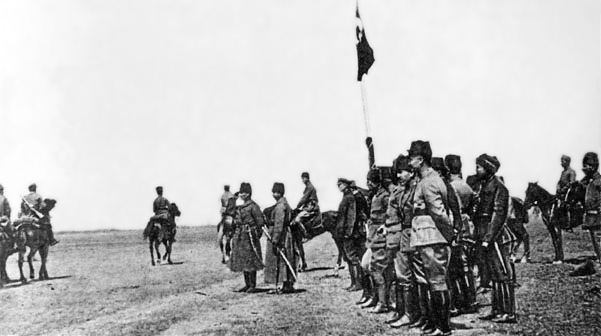|
Order Of Battle For The Battle Of Dumlupınar
On August 1922 during the Battle of Dumlupınar, the opposing armies were deployed as follows: Greek order of battle In summer 1922, the Greek Army of Asia Minor ( el, Στρατιά Μικράς Ασίας) held a front of 713 km, extending from Cius in the Sea of Marmara south-east to a bulge around Eskişehir, thence south to Afyonkarahisar, where it turned west and south over the Akar Dağ Mountain and then followed the right bank of the Büyük Menderes River to the Aegean Sea. The line had been established following the retreat of autumn 1921, after the Battle of Sakarya.Despotopoulos (1978), p. 201 The Army of Asia Minor had its headquarters in Smyrna (Izmir) and was commanded by Lieutenant General Georgios Hatzianestis, with Major General Georgios Valettas as his chief of staff. It comprised a force of 220,000 men, of whom 140,000 were situated at the front but only 80,000 were counted as front-line combatants. The Army's equipment comprised 264 field guns, 980 machine ... [...More Info...] [...Related Items...] OR: [Wikipedia] [Google] [Baidu] |
Battle Of Dumlupınar
The Battle of Dumlupınar ( el, Μάχη του Τουμλού Μπουνάρ, translit=Máchi tou Toumloú Bounár, tr, Dumlupınar (Meydan) Muharebesi, lit=Dumlupınar (Field) Battle), or known as Field Battle of the Commander-in-Chief ( tr, Başkumandanlık Meydan Muharebesi) in Turkey, was the last battle in the Greco-Turkish War (1919–1922) (part of the Turkish War of Independence). The battle was fought from 26 to 30 August 1922 near Dumlupınar, Kütahya in Turkey. Background Following the attrition battle on the Sakarya River (Battle of Sakarya) in August–September 1921, the Greek Army of Asia Minor under General Anastasios Papoulas retreated to a defensive line extending from the town of Izmit (ancient Nicomedia) to the towns of Eskişehir and Kara Hisâr-ı Sahib (present-day Afyonkarahisar). The Greek line formed a 700 km arc stretching in a north–south direction along difficult hilly ground with high hills, called ''tepes'', rising out of broken ter ... [...More Info...] [...Related Items...] OR: [Wikipedia] [Google] [Baidu] |
